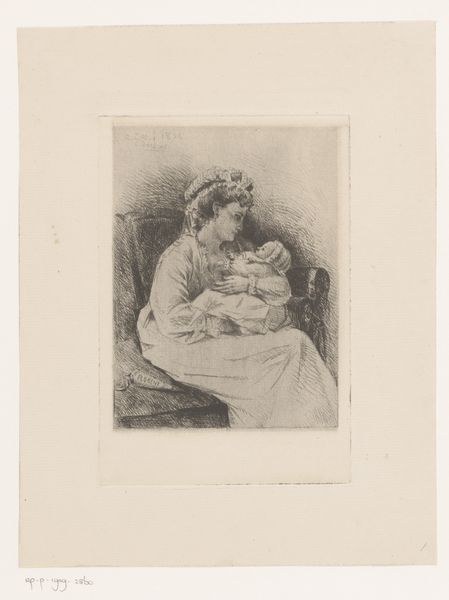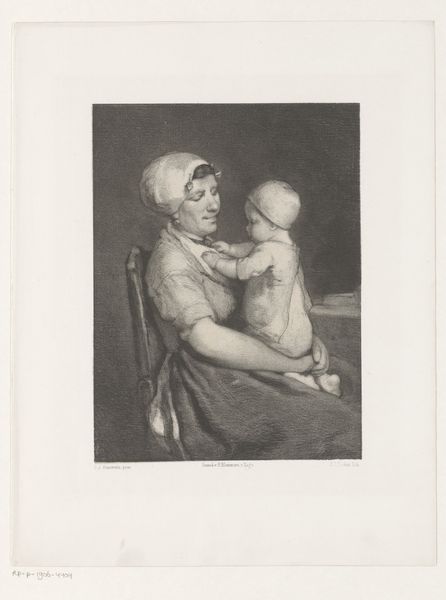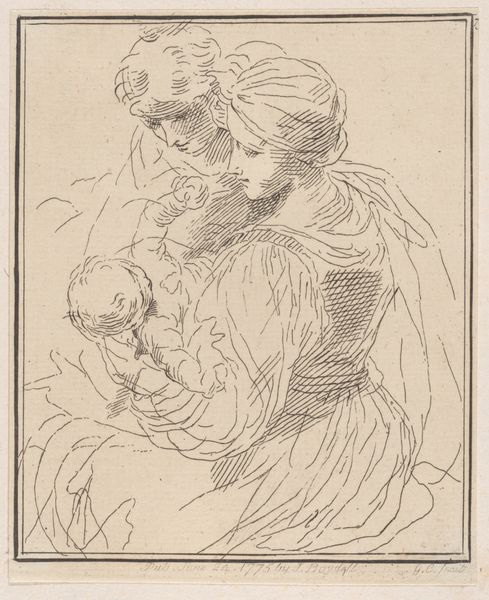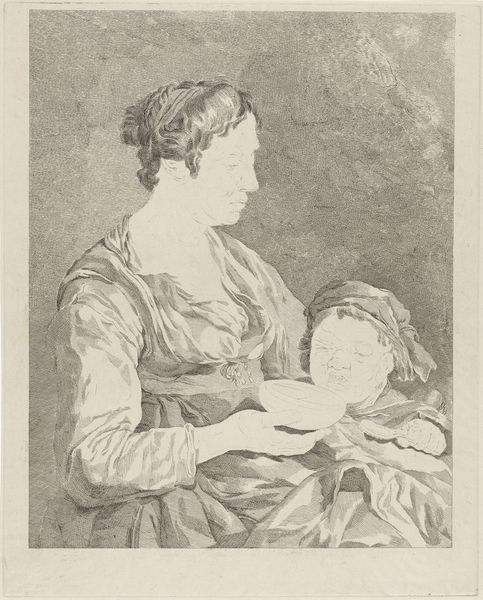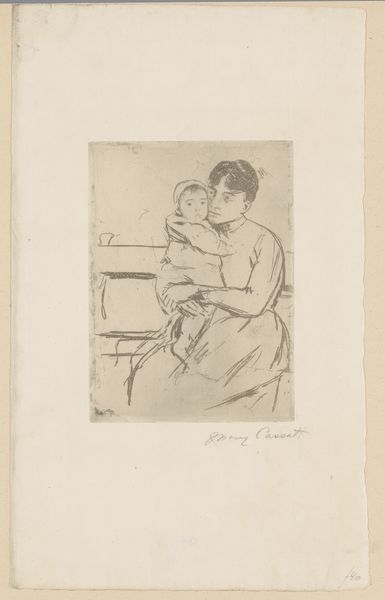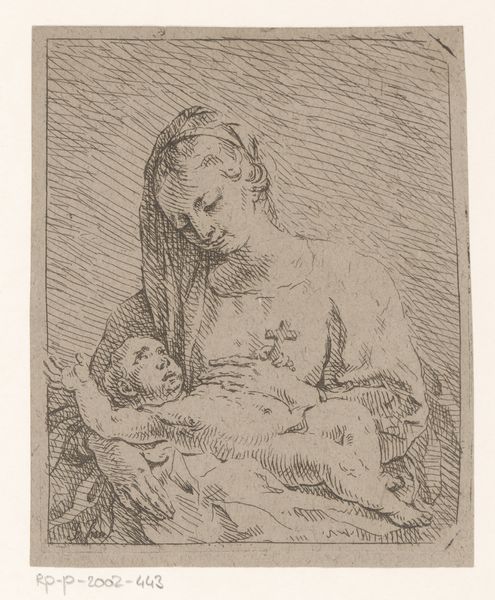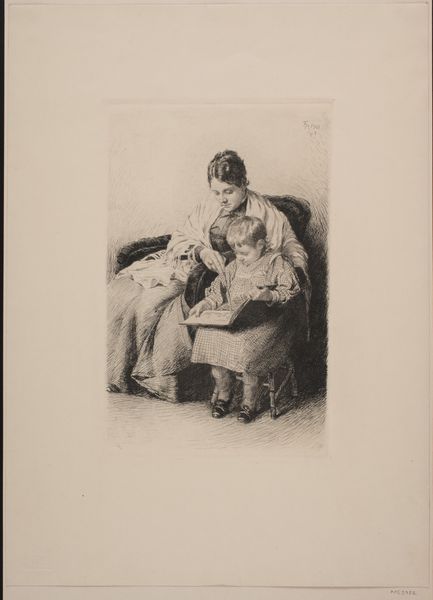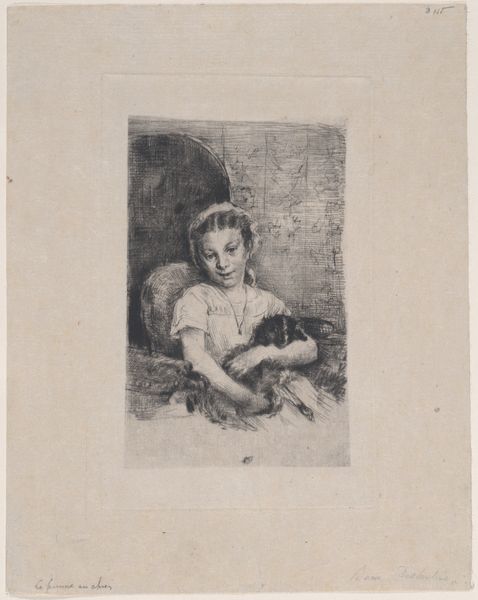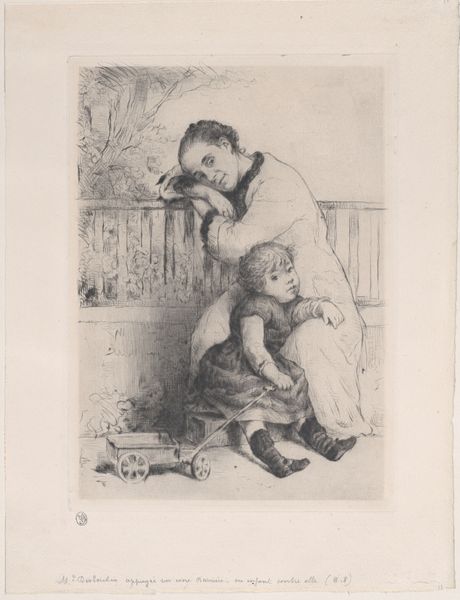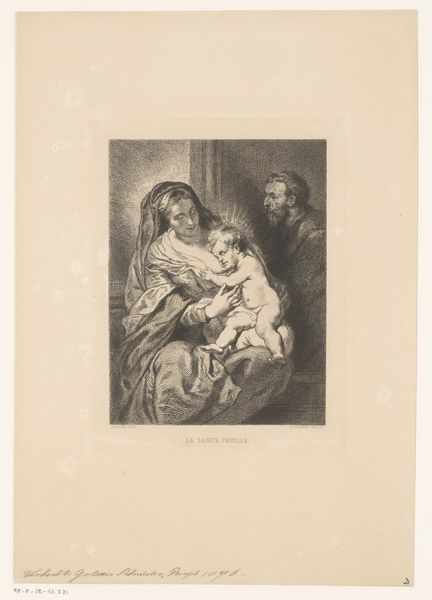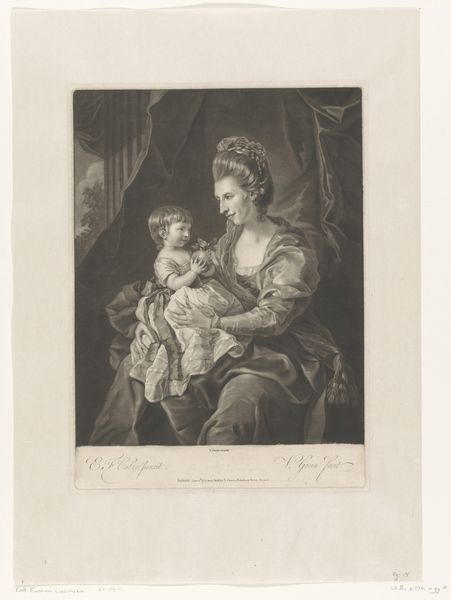
Dimensions: height 181 mm, width 123 mm
Copyright: Rijks Museum: Open Domain
Curator: This etching, titled "Moeder met baby in de armen"—that's "Mother with baby in her arms"—is the work of Constant Aimé Marie Cap, created in 1875. It's a wonderfully intimate portrayal. Editor: There's something so gentle and almost mournful about it. The lines are delicate, creating this hazy, soft effect that speaks of a quiet interiority. She looks almost lost in thought. Curator: Indeed. The image connects to enduring archetypes of motherhood, but Cap's approach also places the image within the visual culture of late 19th-century romanticism, a time when sentimental depictions of family life were particularly popular. We often imbue motherhood with specific sets of symbols: nurturance, care, sacrifice…do you see any visual cues suggesting these broader themes at play? Editor: Her elaborate hair, and the detail in the dress give her a refined sensibility. Yet, there is this strong contrast with the unadorned, somewhat mysterious dark background. It's almost as though there's something unspoken weighing on her. I see both love and perhaps a hint of constraint in this portrait. Is it just me? Curator: Not at all. Etching as a medium, is known for its capacity to achieve finely modulated tones and detailed line work and so would have likely afforded the artist the right type of mood to project the sentiment you’ve mentioned. Editor: I can’t help but reflect on our cultural ideal of mothers. The pressure on them to be always present, always selfless…perhaps that’s why the expression feels complex, even sad? This simple rendering in monochrome becomes surprisingly potent. Curator: Well, that may be because motherhood and maternity – like most forms of social expression – has always been a loaded cultural territory. I believe, like many genre works created by men, that there might have been elements of fantasy projection also. However, there is the possibility to never be certain what the work expresses. Editor: I love how something as simple as an image of a mother holding her baby can bring us into such rich speculation. Curator: Agreed. These intimate scenes resonate because they touch upon universal aspects of human experience – our bonds with one another, the cycles of life and love. Editor: Leaving me to ponder what is truly communicated when artists chose to explore human bonds. Thanks!
Comments
No comments
Be the first to comment and join the conversation on the ultimate creative platform.
